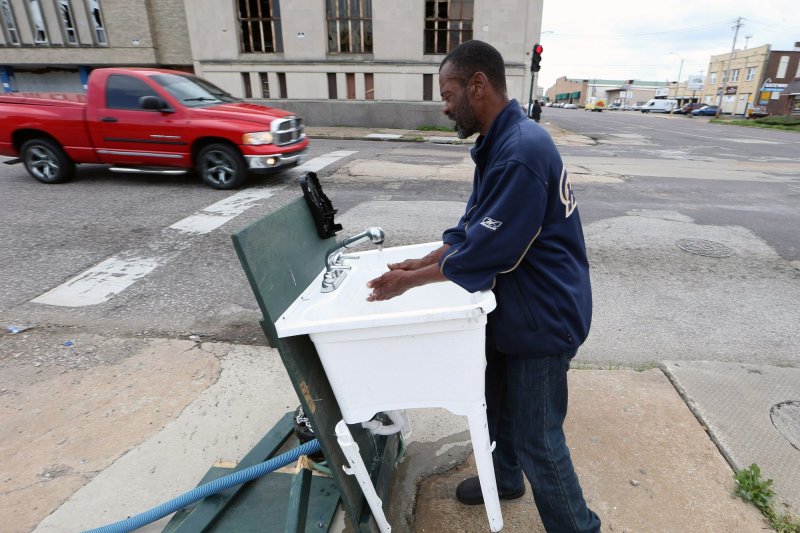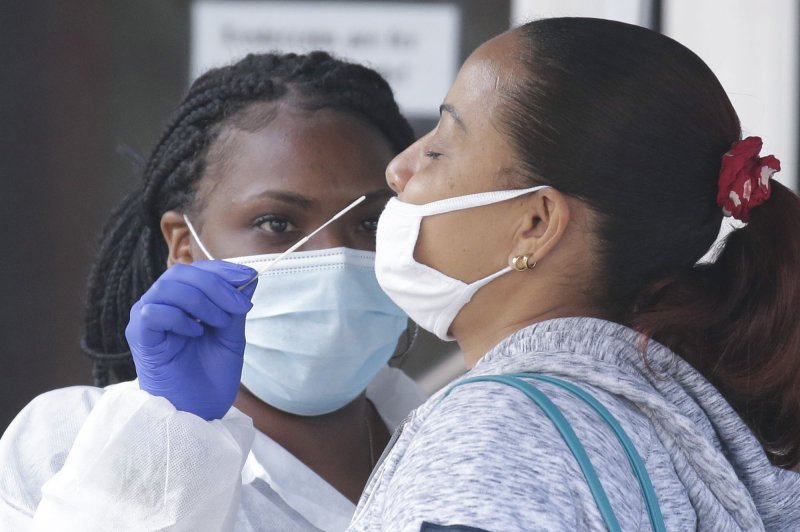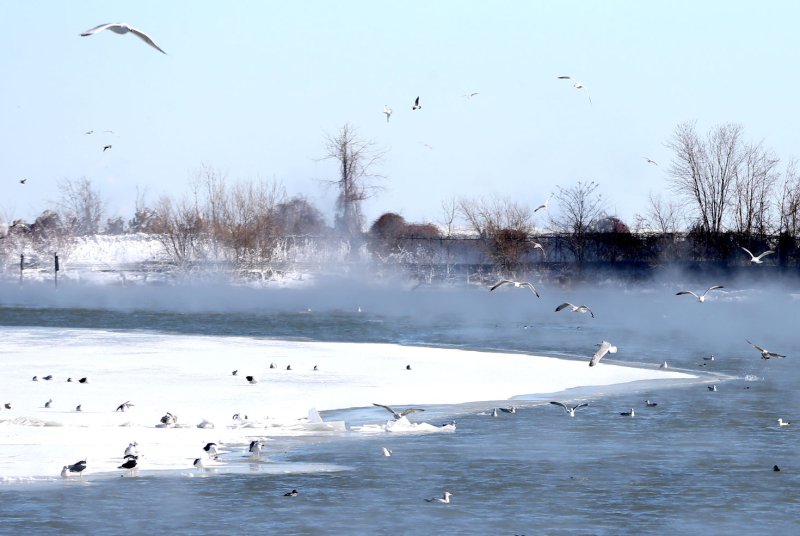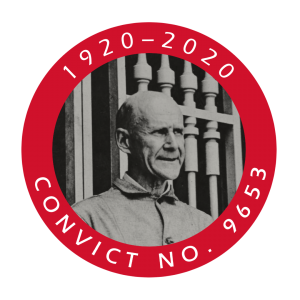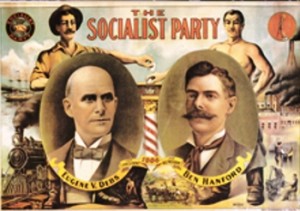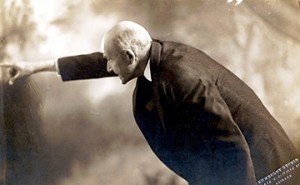VACCINE NEWS CHINA/OXFORD
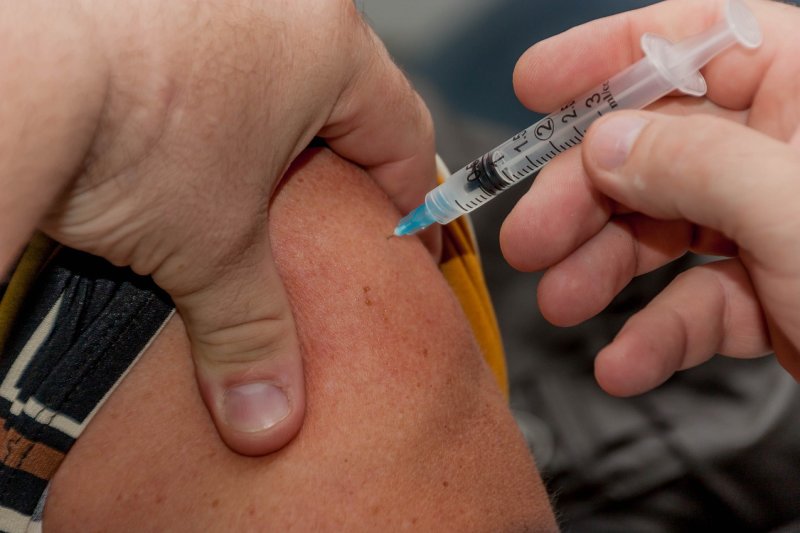
A COVID-19 vaccine in China produces an immune response in early clinical trials, according to research published Tuesday. Photo by huntlh/Pixabay
Nov. 17 (UPI) -- A vaccine against COVID-19 developed in China safely produces antibodies against the virus in 92% of the people who receive it, according to a study published Tuesday by The Lancet Infectious Diseases.
Still, antibody levels among participants receiving the shot, called CoronaVac, were lower than those seen in patients who have recovered following infection, the researchers said.
The trial was not designed to assess the effectiveness of the vaccine, however, and those studies are ongoing, they said.
"Our findings show that CoronaVac is capable of inducing a quick antibody response within four weeks of immunization by giving two doses of the vaccine at a 14-day interval," study co-author Fengcai Zhu said in a statement.
"We believe that this makes the vaccine suitable for emergency use during the pandemic," said Zhu, a researcher with the Jiangsu Provincial Center for Disease Control and Prevention in Nanjing, China.
The findings are the latest to fuel hopes that a viable vaccine against COVID-19 will become available in the short-term.
In recent days, both Pfizer and Moderna have released positive, preliminary results with their respective vaccines. More than 120 potential vaccines are being evaluated, and 48 are in clinical trials.
CoronaVac is a chemically inactivated whole virus vaccine based on a strain of the coronavirus that causes COVID-19, originally was isolated from a patient in China.
In this phase 1/2, two-part clinical trial -- the first stage of the evaluation process -- researchers administered CoronaVac to more than 700 healthy volunteers ages 18 to 59 in China between April 16 and May 5.
No participant had a history of COVID-19 infection, had not traveled to areas with high incidence of the disease and did not have signs of fever at the time the vaccine was administered, the researchers said.
In both parts of the trial, participants were split into two groups to receive one of two vaccination schedules -- either two injections 14 days apart or two injections 28 days apart.
Within each of the two groups, participants were randomly assigned to receive either a low dose of the vaccine -- 3 micrograms -- or a high dose -- 6 mcg.
Antibody responses -- proteins produced by the immune system to fight off viruses -- could be induced within 28 days of the first immunization by giving two doses of the vaccine at the lower dose 14 days apart, the data showed.
In the phase 1 portion of the study, the vaccine produced an immune response in 46% of participants, a figure that more than doubled to just over 92% during the second phase.
The vaccine used in the second phase of the study was produced using a different manufacturing process that may have enabled it to produce a stronger immune response, researchers said.
Participants in all dosing schedules and levels reported similar side effects, with pain at the injection site the most common.
Most of the reported side effects were mild and participants recovered within 48 hours.
CoronaVac can be stored in a standard refrigerator at 36 to 46 degrees Fahrenheit, which is "typical for many existing vaccines including flu," and can remain in storage for up to three years, according to study co-author Dr. Gang Zeng, of China-based Sinovac Biotech, which makes the vaccine.
upi.com/7055828
'Oxford' COVID-19 vaccine found to be safe in clinical trials
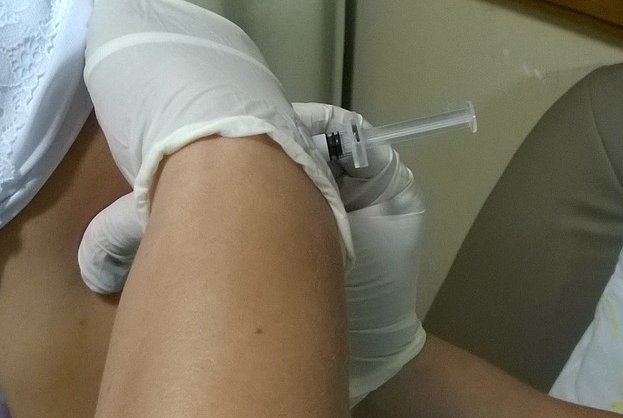
A new study has found the "Oxford" COVID-19 vaccine is safe, particularly in older adults. Photo by marcolohpsoares/Pixabay
Nov. 18 (UPI) -- A COVID-19 vaccine under development in England safely promotes an immune response against the virus, particularly in elderly recipients, a study published Thursday by The Lancet found.
The study's 560 healthy adult participants included 240 people over age 70, according to the researchers.
That the vaccine was found to be safer in older adults than in younger people is significant, given they are at increased risk for severe illness from the new coronavirus, the researchers said.
"The robust ... responses seen in older people in our study are encouraging [because] the populations at greatest risk of serious COVID-19 disease include people with existing health conditions and older adults," study co-author Dr Maheshi Ramasamy said in a press release.
"We hope that this means our vaccine will help to protect some of the most vulnerable people in society, but further research will be needed before we can be sure," said Ramasamy, a professor at the University of Oxford, which is leading the research.
The so-called "Oxford vaccine," formally known as ChAdOx1 nCoV-19 and developed in conjunction with drugmaker AstraZeneca, is one of more than 120 being evaluated in response to the COVID-19 pandemic.
To date, 48 of these vaccines have gotten into in clinical trials to assess their safety and effectiveness.
The study published Thursday is a Phase 2, which is the second stage of research and development for a drug or vaccine. Phase 2 trials evaluate the safety of a product, but not necessarily the effectiveness.
Phase 3 trials are ongoing to confirm the new results -- as well as how effective the vaccine is in protecting against infection with COVID-19 -- in a broader range of people, including older adults with underlying health conditions, according to Oxford.
For the current study, researchers enrolled 560 participants -- 160 ages 18 to 55, 160 ages 56 to 69 and 240 ages 70 and older.
Study participants received either the vaccine at a low or standard dose or a placebo, the researchers said.
In addition, participants age 55 and older were given either a single dose of vaccine or two doses 28 days apart.
The vaccine induced antibodies against the new coronavirus 28 days after a single low or standard dose across all age groups, the researchers said.
After the booster dose of the vaccine, antibody levels increased at day 56 of the trial, irrespective of dose or participant age.
By 14 days after the booster dose, 208 of the 209 participants who received it had neutralizing antibody responses, which means their immune systems were producing cells called antibodies to fight off the virus, according to the researchers.
Side effects to the vaccine were less common in older adults than in younger adults. Symptoms such as temporary pain, tenderness, redness and swelling at the site of the injection occurred in 88% of participants ages 18 to 55 and 66% of those ages 56 and older, the data showed.
Within seven days of injection, 86% of 18-to-55-year-olds developed systemic symptoms, such as temporary fatigue, headache, malaise, fever and muscle aches, as opposed 70% in those over age 56.
Participants will continue to be monitored for any serious adverse events for one year following final vaccination, the researchers said.
Other COVID-19 vaccines have also been shown to generate immune responses in older adults -- including the Moderna mRNA vaccine -- while others have yielded lower responses in older adults, the Oxford researchers said.
This latter group of vaccines includes the CanSino single dose adenovirus-vector vaccine, the Pfizer/BioNTech mRNA vaccine and the SinoPharm/Beijing Institute of Biological Products inactivated viral vaccine, they said.
"The World Health Organization has outlined a number of critical factors for COVID-19 vaccines, including that they must be targeted at the most at-risk groups, including older adults. They must also be safe ... and provide at least six months of protection," study co-author Sarah Gilbert said in a statement.
"Our new study answers some of these questions about protecting older adults, but questions remain about effectiveness and length of protection," said Gilbert, a professor at the University of Oxford.
The Lancet: Phase 2 trial of Oxford COVID-19 vaccine in healthy older adults finds it is safe and provokes immune response
Older adults are at a disproportionate risk of severe COVID-19 disease, so it is essential that any vaccine adopted for use against SARS-CoV-2 is effective in this group
Peer-reviewed / Randomised Controlled Trial / People
**There will be a UK Science Media Centre briefing at 10.15am UK time on Thursday 19th November about this study. Please see details in notes to editors**
- Older adults are at a disproportionate risk of severe COVID-19 disease, so it is essential that any vaccine adopted for use against SARS-CoV-2 is effective in this group
- Study of 560 healthy adults - including 240 over the age of 70 years - presents preliminary findings on safety and immune responses of the ChAdOx1 nCoV-19 vaccine
- Results show that the vaccine is better tolerated in older people compared to younger adults, and produces a similar immune response in old and young adults
- Authors note that their new findings could be encouraging if the immune responses found in their study are associated with protection against infection with SARS-CoV-2, but this study did not assess efficacy and phase 3 trials are ongoing to confirm this.
The UK's vaccine against SARS-CoV-2 shows similar safety and immunogenicity results in healthy older adults (aged 56 years and over) to those seen in adults aged 18-55 years. The promising early stage results are published in The Lancet.
The phase 2 trial finds that the vaccine causes few side effects, and induces immune responses in both parts of the immune system in all age groups and at low and standard dose - provoking a T cell response within 14 days of the first dose of vaccination (ie, a cellular immune response, it could find and attack cells infected with the virus), and an antibody response within 28 days of the booster dose of vaccination (ie, humoral immune response, it could find and attack the virus when it was circulating in the blood or lymphatic system). Phase 3 trials are ongoing to confirm these results - as well as how effective the vaccine is in protecting against infection with SARS-CoV-2 - in a broader range of people, including older adults with underlying health conditions.
Study lead author Professor Andrew Pollard, University of Oxford, UK, says: "Immune responses from vaccines are often lessened in older adults because the immune system gradually deteriorates with age, which also leaves older adults more susceptible to infections. As a result, it is crucial that COVID-19 vaccines are tested in this group who are also a priority group for immunisation." [1]
Co-author Dr Maheshi Ramasamy, University of Oxford, UK, adds: "The robust antibody and T-cell responses seen in older people in our study are encouraging. The populations at greatest risk of serious COVID-19 disease include people with existing health conditions and older adults. We hope that this means our vaccine will help to protect some of the most vulnerable people in society, but further research will be needed before we can be sure." [1]
The new study is the fifth published clinical trial of a vaccine against SARS-CoV-2 tested in an older adult population. Other COVID-19 vaccines have also been shown to generate immune responses in older adults, but it can be difficult to compare results between different studies. One study has shown similar immune responses in young and old adults (Moderna mRNA vaccine), while other trials have suggested lower measured responses in older adults, compared to younger adults receiving the same vaccine (CanSino single dose adenovirus-vector vaccine, Pfizer/BioNTech mRNA vaccine, and SinoPharm/Beijing Institute of Biological Products inactivated viral vaccine).
In the phase 2 trial published today, 560 participants (160 aged 18-55 years, 160 aged 56-69 years, and 240 aged 70 or over) were split into 10 groups [2] where they received either the ChAdOx1 nCoV-19 vaccine at a low or standard dose, or a control vaccine (the meningococcal conjugate vaccine). Participants aged over 55 years were also split into groups and either given a single dose of vaccine, or two doses 28 days apart.
Study recruitment occurred during a national lockdown in the UK when vulnerable individuals were advised to self-isolate. For this reason, the study includes only healthy participants and not those with co-morbidities or who are frail. Before receiving the vaccine, all participants had a blood test to determine if they had previously been infected with SARS-CoV-2. Those who had antibodies for SARS-CoV-2 were excluded, except for 18-55-year-olds in the standard dose double vaccine groups.
Following vaccination, participants were observed for a minimum of 15 minutes in case of any immediate adverse events, and participants recorded any adverse events for seven days afterwards. Participants will continue to be monitored for any serious adverse events for one year following final vaccination (the year long data are not yet available).
Participants aged 18-55 years who received two standard doses of the Oxford COVID-19 vaccine and all participants aged 56 years or over had their immune responses assessed on the day of vaccination, then 1, 2 and 4 weeks after their first and second vaccination.
Adverse reactions to the ChAdOx1 nCoV-19 vaccine were mild (the most common effects were injection-site pain and tenderness, fatigue, headache, feverishness and muscle pain), but more common than seen with the control vaccine. Thirteen serious adverse events occurred in the six months since the first dose was given, none of which were related to either study vaccine.
Adverse effects were less common in older adults than in younger adults (within seven days of one standard dose of ChAdOx1 nCoV-19, local symptoms such as temporary pain, tenderness, redness, and swelling at the site of the injection occurred in 88%, 43/49 18-55 year olds, 73%, 22/30 56-69 year olds, and 61%, 30/49 people aged 70 or over. Within 7 days of injection, systemic symptoms such as temporary fatigue, headache, malaise, feverishness, and muscle aches occurred in 86%, 42/49 18-55 year olds, 77%, 23/30 56-69 year olds, and 65%, 32/49 people aged 70 or over), and similar levels of local symptoms were seen after the first and booster doses of the Oxford COVID-19 vaccine in older adults, while there were few systemic symptoms following the booster dose.
The COVID-19 vaccine had similar immunogenicity across all age groups after a boost dose.
The ChAdOx1 nCoV-19 vaccine induced antibodies against the SARS-CoV-2 spike protein and receptor binding domain 28 days after a single low or standard dose across all age groups. Following the booster dose of the vaccine, antibody levels increased at day 56 of the trial, irrespective of dose or participant age. The same was seen with levels of neutralising antibodies at day 42, two weeks after the booster vaccine dose. By 14 days after the boost dose, 208 of 209 (more than 99%) participants (selected from participants of all ages and doses) had neutralising antibody responses.
T cell responses against the SARS-CoV-2 spike protein peaked 14 days after first vaccination, regardless of age and low or standard vaccine dose.
Co-author, Professor Sarah Gilbert, University of Oxford, UK, says: "The WHO has outlined a number of critical factors for COVID-19 vaccines, including that they must be targeted at the most at-risk groups including older adults. They must also be safe, effective in preventing disease and/or transmission, and provide at least six months of protection for people frequently exposed to the virus - such as healthcare workers. Our new study answers some of these questions about protecting older adults, but questions remain about effectiveness and length of protection, and we need to confirm our results in older adults with underlying conditions to ensure that our vaccine protects those most at risk of severe COVID-19 disease." [1]
The authors note some limitations to their study, including that the participants in the oldest age group had an average age of 73-74 years and few underlying health conditions, so may not be representative of the general older population, including those living in residential care settings or over 80 years of age. Larger studies are now underway to evaluate immunogenicity, safety and efficacy in older adults with a wider range of comorbidities. Lastly, the authors note that almost all participants of all ages were white and non-smokers, and may not be representative of the general population, but people from a range of backgrounds, countries and ethnicities are being included in the phase 3 trial of this vaccine.
Writing in a linked Comment, lead author Dr Melissa Andrew, Dalhousie University, Canada, who was not involved in the study, says: "It is encouraging that more studies in older adult populations are underway and will hopefully bring opportunities to implement nuanced analyses of how underlying health status and frailty affect vaccine safety, reactogenicity, immunogenicity, and efficacy in older adults in real-world settings. Older adults (across the full spectrum of frailty) and those who care about them are eagerly awaiting this progress towards safe and effective COVID-19 vaccines."
###
NOTES TO EDITORS
This study was funded by UK Research and Innovation, National Institutes for Health Research (NIHR), Coalition for Epidemic Preparedness Innovations, NIHR Oxford Biomedical Research Centre, Thames Valley and South Midlands NIHR Clinical Research Network, and AstraZeneca. A full list of the authors and their institutions is available in the paper.
The labels have been added to this press release as part of a project run by the Academy of Medical Sciences seeking to improve the communication of evidence. For more information, please see: http://www.
[1] Quote direct from author and cannot be found in the text of the Article.
[2] See figure 1 for full detail. 300 participants were enrolled to the low-dose cohort, and 260 to the standard-dose cohort.
In the low-dose cohort, there were 100 18-55 year olds (50 in the two-dose COVID-19 vaccine group, and 50 in the two-dose control group), 80 56-69 year olds (30 in the one-dose COVID-19 vaccine group, 10 in the one-dose control group, 30 in the two-dose COVID-19 vaccine group, and 10 in the two-dose control group), and 120 people aged over 70 (50 in the one-dose COVID-19 vaccine group, 10 in the one-dose control group, 50 in the two-dose COVID-19 vaccine group, and 10 in the two-dose control group).
In the standard-dose cohort, there were 60 18-55 year olds (50 in the two-dose COVID-19 vaccine group, and 10 in the two-dose control group), 80 56-69 year olds (30 in the one-dose COVID-19 vaccine group, 10 in the one-dose control group, 30 in the two-dose COVID-19 vaccine group, and 10 in the two-dose control group), and 120 people aged over 70 (50 in the one-dose COVID-19 vaccine group, 10 in the one-dose control group, 50 in the two-dose COVID-19 vaccine group, and 10 in the two-dose control group).
For interviews with the Article author, please contact the University of Oxford press office: E) news.office@admin.ox.ac.uk T) +44 (0) 1865 280528
Please be aware, due to limited availability, the authors are not available for comment prior to the embargo lifting. They will be available for further questions at a UK Science Media Centre briefing at 10.15am UK time on Thursday 19th November. To register to attend, please contact Fiona Lethbridge: lethbridge@sciencemediacentre.org
